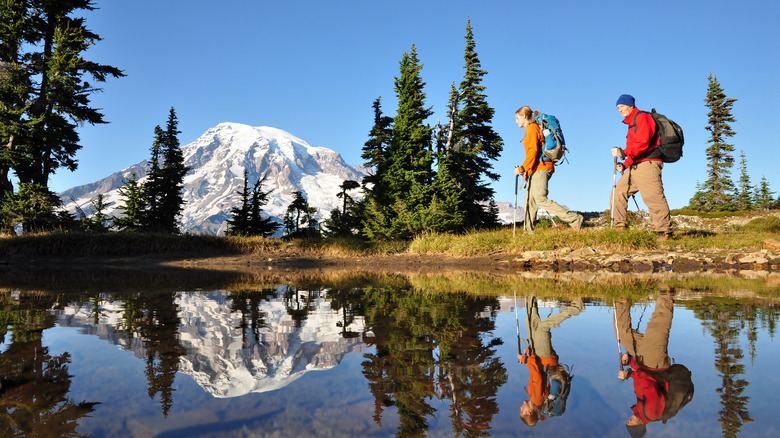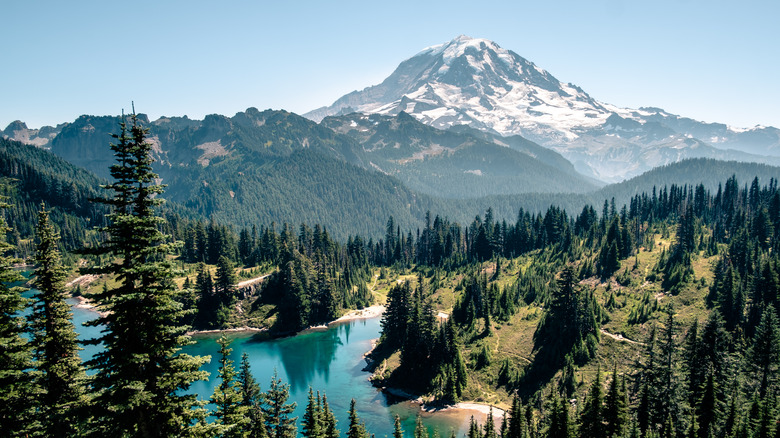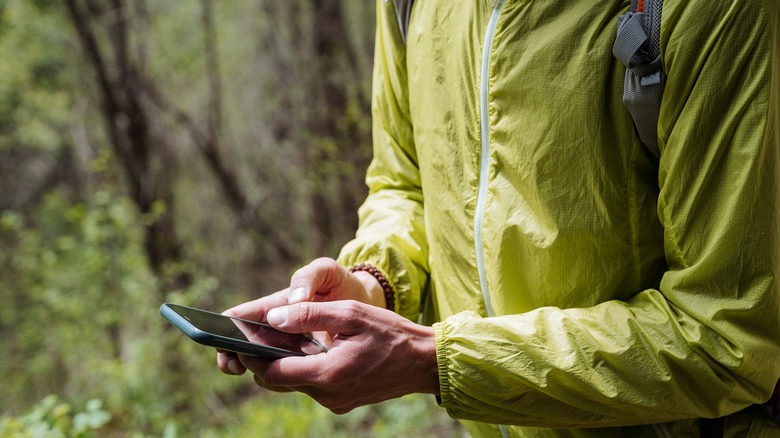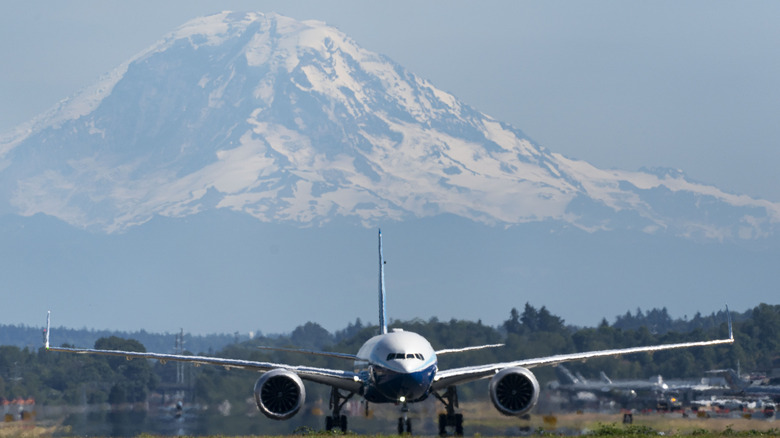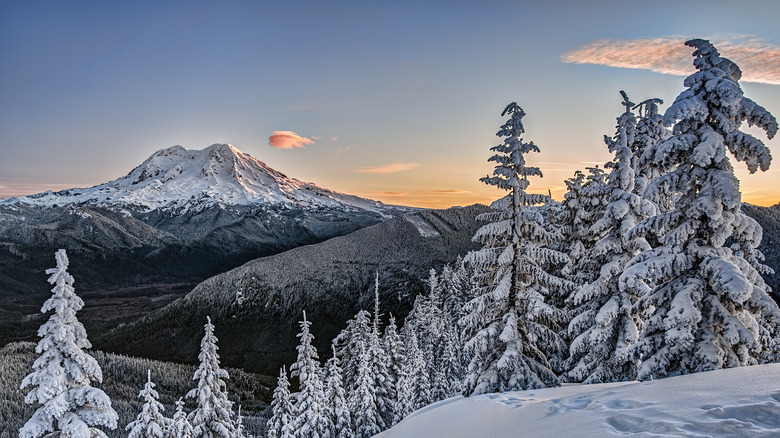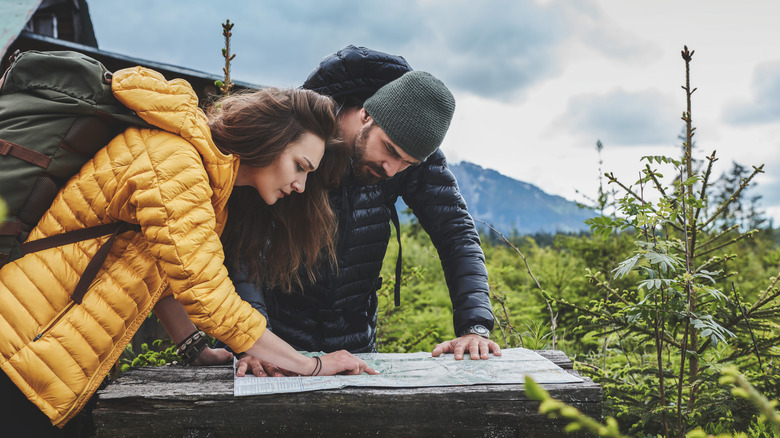Just How Dangerous Is A Visit To The Active Volcano In This Beautiful National Park?
Just because it's one of the most dangerous volcanoes in the United States doesn't mean that people avoid Mt. Rainier. The active volcano, located in Washington State, sits in the Cascade Mountains and is only 60 miles from Seattle. Located in the heart of the Pacific Northwest, it is a key recreation spot for the adventurous. In fact, there's something to do on Mt. Rainier every season of the year. People can go hiking, fishing, and camping during the summer, as well as horseback riding and mountain biking. The fall attracts photographers who come from all over the world to capture the foliage; plus, it's a great time for huckleberry and mushroom picking. In the winter, the mountain comes alive with cross-country skiing, downhill skiing and snowboarding, snowmobiling, and tubing. Plus, for the very adventurous, people camp on Mt. Rainier in the winter. It seems like everyone wants to add the famous volcano to their U.S. destinations bucket list.
Despite this hub of activity all year round, Mt. Rainier is an increasing source of worry for volcanologists, like Janine Krippner who told National Geographic how concerning the volcano was. "Rainier is one of the most dangerous volcanoes in the world," Krippner explained. "It's a huge concern." Clearly, there are dangers worth being aware of when it comes to Mt. Rainier.
Debris flows pose a real danger
Mt. Rainier hasn't erupted in over 1,000 years, and is technically considered a stratovolcano, meaning that it's episodically active. There were recorded activities from Mt. Rainier in the 19th century as well. Despite this, volcanologists still consider the volcano a danger. We might picture volcanic danger in the form of rivers of lava or pyroclastic flows, which are steaming mixtures of hot gas and lava debris. However, it's actually mud that can cause initial — and deadly — damage. What happens is that the heat of the active volcano melts the glacier, and Mt. Rainier has a substantial glacial mantle. The melting water, mixed with rocks and sediment, creates debris flows called lahars.
These deadly mudslides are basically like a river of concrete that crushes and covers everything in their path. What's even scarier about lahars is that they move quickly. In 1985, when the Nevado del Ruiz erupted in Columbia, the lahars killed over 23,000 people, moving at almost 19 miles an hour. For the record, there can be lahars without eruption. Over the past 6,000 years, Mt. Rainier has had at least nine lahars. Thankfully, the United States Geological Survey agency does have a system to detect early signs of these deadly mudslides, with the aim of evacuating people as quickly as possible.
Take any volcano warnings seriously
With the knowledge that lahars, or volcanic mudslides, move quickly and can occur without an actual eruption taking place, the best way to protect yourself while hiking around the area is to pay attention to any warnings from the United States Geological Survey or the Washington State government. Considering the speed with which lahars can travel, people need to be ready to move quickly should something happen.
"There's this massive misconception that in a disaster, people panic," Krippner told National Geographic. "Recent research shows that that's a rare case. Most often, people don't react; they freeze, or they shrug the warning off, assuming it's not that serious." So it's not always an issue of lack of warning; the problem, in some cases, can be a lack of attention given to the warnings themselves. Krippner stressed the importance of taking lahars seriously. "Lahars can lift houses. They can overtake a bridge. They can take the bridge with it," she said. "Imagine if you're in that valley today. Can you climb 150 meters [490 feet] particularly quickly?"
Because of the makeup of the valleys below the volcano, the Puyallup Valley is in the highest risk zone as there isn't a dam to act as a catch-all for lahars in the event of an eruption. So if you're in this area or anywhere else near Mt. Rainier, be responsive to any kind of warning.
The volcanic ash is a hazard to airplanes
Volcano eruptions have a unique impact on travel, should people need to evacuate quickly. There would inevitably be considerable volcanic ash in the air should Mt. Rainier erupts, and this makes air travel impossible in the area. Volcanic ash is extremely hazardous for airplanes. Not only do volcanic ash clouds reduce visibility, but they also can damage parts of the plane and the jet engines can stop working. Airplane engines cannot filter out volcanic ash which can cause engines to stall. The exteriors of airplanes, especially the windshields, can also suffer extreme damage.
In 1982, a British Airways flight flew through an ash cloud over an active volcano in Indonesia and all four engines failed. The pilots were able to restart three of the engines and were forced to glide into an emergency landing. The plane landed safely, but because of this harrowing history with volcanic ash, airlines cannot operate near such natural disasters, making it harder for people to flee these disaster zones.
Earthquakes are common around Mt. Rainier
Mt. Rainier is located in a seismically active area of the Pacific Northwest. In fact, the Western Rainier Seismic Zone is one of the most active fault lines and has to be continually monitored by the Pacific Northwest Seismic Network. Every month, the network records an average of three to four earthquakes near the volcano. They're not huge earthquakes, however. Their magnitude tends to be less than 3.0, and occasionally, the volcanic area experiences as many as three or more earthquakes in a single day.
In February 2021, experts detected twenty small earthquakes in one single day at Mt. Rainier. However, the largest of these earthquakes was a 2.5, so experts said there wasn't anything to be alarmed about. Many were so small that they weren't felt on the earth's surface. Harold Tobin, the director of the Pacific Northwest Seismic Network, told KUOW in 2019, "All of our active volcanoes have occasional swarms of this kind of seismic activity, so small swarms of earthquakes like this at Mount Rainier are tremendously common." But there's clearly a lot of activity, and there remains the potential for more serious earthquakes in the future.
Have an evacuation plan ready when you visit Mt. Rainier
While experts and volcanologists are frank about the concerns around Mt. Rainier, this doesn't mean that you can't enjoy a visit to the epic volcano. Mt. Rainier clearly sits in an earthquake area, and volcanic activity, though slight, still continues. What makes Mt. Rainier even more dangerous is that there's not always a lot of warning when a volcano truly erupts. Experts do their best to predict disasters, but this isn't always possible. And the fact that it's been over 1,000 years since the last eruption, people can get complacent about the deadly possibility that lies beneath the surface.
The safest course of action is to have an evacuation plan ready, just in case, particularly if you're staying in an area where lahars could head. Brian Terbush, Washington State Emergency Management Division volcano program coordinator, spoke about this concern on Reddit, (via K5 News). Terbush said that, "it's important to know and understand these hazards and how you can prepare for them, such as knowing your evacuation routes if you live, work, or commute through a lahar hazard zone." Hazard maps provide this crucial information, and staying vigilant is key.
